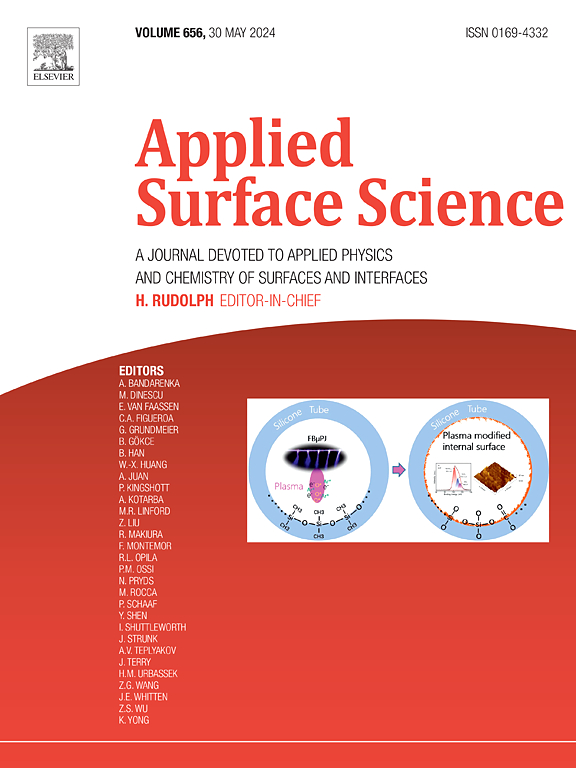Methane oxidation with low Pt2+ catalyst: High activity and stability against SO2, NO, and H2O poisoning
IF 6.3
2区 材料科学
Q2 CHEMISTRY, PHYSICAL
引用次数: 0
Abstract
We report the exceptional performance of a Pt/ZrO2 catalyst with highly dispersed 3.5 at % Pt loading for methane oxidation, demonstrating its outstanding resistance to deactivation in lean exhaust conditions, which contain SO2, NO, and H2O. X-ray photoelectron spectroscopy analysis of fresh and used catalysts revealed the presence of Pt2+and Pt4+ surface species, even under these challenging reaction conditions. A mechanism is proposed to highlight the synergistic roles of Pt4+ species for oxygen adsorption and the Pt2+/ZrO2 interface for methane adsorption, reducing the competition between the reacting molecules. Despite an increase in apparent activation energy in the presence of SO2, NO, or H2O, the catalyst retains its high activity. The high methane oxidation activity of the catalyst is attributed to the higher velocity of methane molecules, resulting in more frequent and successful collisions at Pt2+/ZrO2 interface compared to other species in engine exhaust. The enhanced stability of the Pt2+ surface species is further explained by the energy-level alignment at the Pt2+/ZrO2 interface, which is driven by the interfacial work function values of Pt2+ surface species and n-type semiconductor ZrO2. The results highlight the potential of Pt/ZrO2 catalyst for efficient and stable methane oxidation in real-world exhaust environments of natural gas engines.

低Pt2+催化剂氧化甲烷:对SO2, NO和H2O中毒具有高活性和稳定性
我们报道了一种高度分散的Pt/ZrO2催化剂在3.5% Pt负载下的甲烷氧化性能,表明其在含有SO2, NO和H2O的稀薄排气条件下具有出色的抗失活能力。对新鲜和使用过的催化剂的x射线光电子能谱分析显示,即使在这些具有挑战性的反应条件下,也存在Pt2+和Pt4+表面物质。提出了一种机制,以突出Pt4+物种对氧气吸附的协同作用和Pt2+/ZrO2界面对甲烷吸附的协同作用,减少反应分子之间的竞争。尽管在SO2、NO或H2O存在下表观活化能增加,催化剂仍保持其高活性。催化剂的高甲烷氧化活性归因于甲烷分子的高速度,与发动机排气中的其他物质相比,甲烷分子在Pt2+/ZrO2界面上的碰撞更频繁和成功。Pt2+表面物质与n型半导体ZrO2的界面功函数值驱动了Pt2+/ZrO2界面的能级排列,进一步解释了Pt2+表面物质稳定性的增强。这一结果凸显了Pt/ZrO2催化剂在天然气发动机实际排气环境中高效、稳定地氧化甲烷的潜力。
本文章由计算机程序翻译,如有差异,请以英文原文为准。
求助全文
约1分钟内获得全文
求助全文
来源期刊

Applied Surface Science
工程技术-材料科学:膜
CiteScore
12.50
自引率
7.50%
发文量
3393
审稿时长
67 days
期刊介绍:
Applied Surface Science covers topics contributing to a better understanding of surfaces, interfaces, nanostructures and their applications. The journal is concerned with scientific research on the atomic and molecular level of material properties determined with specific surface analytical techniques and/or computational methods, as well as the processing of such structures.
 求助内容:
求助内容: 应助结果提醒方式:
应助结果提醒方式:


